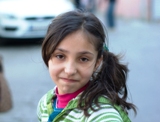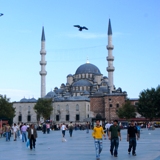-
Join 5,512 other subscribers
authors
Popular posts
- My New Adress
- Hançerli Rum Kilisesi
- About us
- Buyukada, Aya Yorgi Church
- streets of Yedikule
- A Muezzin from the Tower of Darkness cries, “Fools! your Reward is neither Here nor There.”
- being captured is beside the point, the point is not to surrender.
- Ali Suavi street, Kadikoy
- Holy places
- Haydarpasa Camii, Kadikoy
Comments
-
Last posts
- My New Adress
- 13th Istanbul Biennial
- LGBT pride day at Taksim (Life gets better together) #direnAyol
- LGBT marching at Taksim #direnAyol
- #DirenLice Taksim demonstration
- #DirenGezegen , against dirty energy , Kadikoy
- My Name is Ethem Sarisülük
- nitimur in vetitum “Taksim”
- Everywhere is Taksim. Resist at Kadikoy, Istanbul #occupygezi (7th day)
- Everywhere is Taksim. Resist at Kadikoy, Istanbul #occupygezi (6th day)
- #occupyGezi, Resist at Taksim square
- #OccupyGezi , Everywhere is Taksim resist at every street
- #OccupyGezi We want to save our last trees
- #OccupyGezi , We are protesting Taksim Shopping Project
- Hidrellez-Ahirkapi 2013 by Bernardo Ricci Armani
Calendar
May 2024 M T W T F S S 1 2 3 4 5 6 7 8 9 10 11 12 13 14 15 16 17 18 19 20 21 22 23 24 25 26 27 28 29 30 31 Istanbul tulip festival
Proud to be Pentaxian
Portraits
Mosques
Archives
categories
- animal (1)
- Antalya (78)
- Canakkale (28)
- church (61)
- dont block the blog (10)
- door (50)
- Duzce (74)
- event (80)
- Food (119)
- fountain (11)
- Gaziantep (2)
- gravestones (66)
- house (78)
- Istanbul (3,639)
- Adalar (17)
- Ahirkapi (6)
- Aksaray (29)
- Ayvansaray (10)
- Balat, Fener (198)
- Bebek (31)
- Besiktas (64)
- Beyazid, Mercan (108)
- Beykoz (90)
- Beyoglu (72)
- Blacksea (152)
- Bosphorus (206)
- Cagaloglu (2)
- Cemberlitas (10)
- Cibalikapi (4)
- Cukurbostan (6)
- Edirnekapi (13)
- Eminonu (158)
- Emirgan (130)
- Erenköy (26)
- Europe side (1,048)
- Eyup (60)
- Fatih (107)
- Galata (60)
- Galatasaray (3)
- Golden Horn (218)
- Harem (6)
- Haydarpasa (38)
- Kadikoy (145)
- Karakoy (48)
- Kasimpasa (26)
- Kocamustafapasa (17)
- Kuzguncuk (21)
- Moda (53)
- Nisantasi (2)
- Ortakoy (7)
- Pasalimani (5)
- Polonezkoy, Adampol (69)
- Riva (33)
- Samatya (11)
- Selimiye (2)
- Sile (6)
- Sirkeci (21)
- Sisli (5)
- Suleymaniye (62)
- Sultanahmet (224)
- Taksim (43)
- Tepebasi (4)
- Unkapani (1)
- Uskudar (384)
- Vefa (5)
- Yedikule (19)
- Yeldegirmeni (3)
- Zeyrek (33)
- Izmir (2)
- mosque (292)
- Mugla (1)
- museum (58)
- pentax (2,905)
- photo (2,452)
- poem (466)
- portrait (274)
- postaday2011 (381)
- quotes (17)
- street (60)
- sunset, night (126)
- toys (17)
- transportation (121)
- tulip festival (300)
- Turkey (1,945)
- window (77)
Flickr Photos
Blogroll
- Ayşegül Bursalı
- Özgür Özkök
- Özgür Mutfak (in Turkish)
- Collection of biographies
- cool things about Turkey
- Daily facts
- Daily photo evolution
- Fotoblog Warszawa
- Istanbul trails
- my selections
- Newcastle daily photoblog
- One Way Photoblog
- Renai in Istanbul
- Rocket fever
- Street films
- Streets of Istanbul
- VFXY page
- Waltzing Australia
Tag Archives: Zeyrek Mosque
Zeyrek Church Mosque

Zeyrek Mosque, Church of the Monastery of Pantocractor, Zeyrek Museum, Molla Zeyrek Camii, Zeyrek Istanbul, Pentax K10d
Notes from Archnet
ArchNet is an exciting project being developed at the MIT School of Architecture and Planning in close cooperation with, and with the full support of The Aga Khan Trust for Culture, an agency of the Aga Khan Development Network. The Aga Khan Trust for Culture is a private, non-denominational, international development agency with programmes dedicated to the improvement of built environments in societies where Muslims have a significant presence.
http://archnet.org/library/sites/one-site.jsp?site_id=7175
The Zeyrek Church Mosque, formerly the Church of the Monastery of Pantocractor, was built by Byzantine Emperor John II Comnenus (1118-1143) and his wife, Empress Irene. Built on the forth hill of the city overlooking the Golden Horn, the famous Middle Byzantine foundation had a triple-church, a hostel, a hospital, a hospice for the elderly, a medical school and a library. Copies of the Typikon, or the monastery calendar describing services and ceremonies, provide details of the monastery’s social and religious functions. The imperial founders endowed the monastery with numerous properties, including other monasteries in the Marmara region, Thrace, Macedonia, Western Anatolia and the Aegean Islands. Only the church, used as a mosque since the Ottoman conquest, and the cisterns of the monastery have remained.
The church consists of three joint churches built successively in the 12th century. The church to the south was built first and dedicated to Christ the Pantocrator, or “He who reigns over all, the Almighty”; hence the name of the monastery. A smaller church, built ten meters north of the earlier structure was consecrated to Panagia Eleousa or Merciful Mary. The two churches were subsequently united with a funerary chapel fitted in between, honoring St. Michael the Archangel. Converted to a mosque after temporary use as a madrasa after the Ottoman takeover, the church was named “Zeyrek” after Molla Zeyrek Mehmed Efendi, a resident of the neighborhood who taught at the madrasa. The mosque, repaired after a fire in mid 18th century, fell into disrepair by the 1950s. The library of the monastery burnt in 1934.
Archaeological studies by the Byzantine Institute of America in the mid 1950s have revealed floor mosaics of the period. The central church was re-opened for Islamic prayer during this time and the Directorate of Religious Endowments restored the northern church in 1966. The current restoration work, begun in 1997 by Professors Robert Ousterhout, Zeynep Ahunbay and Metin Ahunbay, is funded by the Kress Foundation/World Monuments Fund, University of Illinois Research Fund, Istanbul Technical University and Dumbarton Oaks Project Grants. The Zeyrek Church Mosque was included in the annual list of the World Monuments Watch “100 Most Endangered Sites” in 2002.
The triple-church is entered from the west, through the outer narthex of the southern church, which opens into an inner narthex that spans the entire length of the church and gives access into the three naves. The outer narthex, composed of five cross-vaulted bays, has ablution spigots at its north end. Five brick archways, with a rose marble frame set inside each arch, lead into the inner narthex. The central archway between the narthexes is distinguished with its taller frame crowned by a triple arch, across from the entry into the southern church, embellished similarly with marble frames. The inner narthex also has an upper level. Unlike the dim atmosphere of the lower level, the upper level is brightly lit with clerestory windows and windows pierced into the central bay’s dome.
The southern church, oldest among the three, has a cross-dome plan. It consists of a domed nave at the center, flanked by vaulted aisles on three sides, and a deep apsidal sanctuary to the east. The aisles and sanctuary, in other words, form the four arms of the Greek cross in plan. The aisles here are separated from the nave with four columns symmetrically placed around the nave, which support the weight of the roof along with piers embedded in side walls. The side aisles terminate in narrow miniature chapels with apses, linked with the central sanctuary. The space is lit with sixteen windows on the dome, windows inside the four barrel-vaults, and sanctuary windows placed at two levels. The southern church also has windows to the upper level of the inner narthex, which projects into the space with an ornate bay window. The capitals of the four central columns, the bay window, the mihrab and painted decoration of the interior date from renovations performed at the height of Ottoman baroque. The fine mosaic floor of the southern church, discovered underneath its wooden floor by the Byzantine Institute, provides clues to the original decoration of the interior. Archaeological studies by the Institute have recovered fragments of colored glass, believed to belong to original windows. The marble revetments of the sanctuary have remained intact, while marble parts of the iconostas were used in the minbar.
A wall, placed midway between the southern and northern churches, partitions the inner narthex into two sections. The funerary chapel joining the two churches is entered from either section, as well as from the individual churches, although the connecting archways are boarded up. Narrow and deep, the funeral chapel consists of a nave, covered by two oval domes, and a semi-domed apsidal sanctuary. It is dimly lit with windows on its two domes. The crypt underneath the chapel was used for years as the burial ground of the Palaeologan family, including the imperial founders Comnenus I and Irene. Also used as a mosque, the chapel has a mihrab, a minbar and a preacher’s lodge today. The church to the north, dedicated to the Virgin Mary, is smaller than but identical to the southern church. It also lacks an exterior narthex, but has a separate side entrance in addition to two doors on the inner narthex and archways that link it to the funerary chapel to its south. The northern church and its narthex were restored by the Ministry of Religious Endowments in 1966-67.
On the exterior, the ensemble is animated by the undulating cornice line, which follows the profile of the barrel vaults. Beside the outer narthex, capped at a lower level with a sloping roof, the three churches have a continuous roof cover from which the five domes rise to varying heights reflective of their size and importance. A minaret, added during the conversion, is located at the northwest corner of the exterior narthex, to the right of the main entrance. The stone foundations remain to the south, where a building as large as the northern church was attached to the narthexes. A wooden takiyya (tekke), built on these foundations during Ottoman times, is seen in older photographs along with housing that was built along the southern wall of the churches.
- Dünden Bugüne Istanbul Ansiklopedisi. 1993. Istanbul: Türkiye Ekonomik ve Toplumsal Tarih Vakfi, vol. 7, 555-557 and vol.6, 218.
- Ahunbay, Metin and Zeynep Ahunbay. 2001. “Restoration Work at the Zeyrek Camii, 1997-1998.” Byzantine Constantinople: Monuments, Topography, and Everyday Life (ed. N. Necipoglu). Brill: Leiden, Boston, 117-32.
- Mathews, Thomas. 1976. The Byzantine Churches of Istanbul: A Photographic Survey. University Park: Pennsylvania State University Press, 71-102.
- Müller-Wiener, Wolfgang. 2001. [Bildlexikon zur Topographie Istanbuls.Turkish]. Istanbul’un Tarihsel Topografyasi: 17. yüzyil baslarina kadar Byzantion-Konstantinopolis-Istanbul. (translated by Ülker Sayin). Istanbul: Yapi Kredi Yayinlari.
- Ousterhout, Robert, Zeynep Ahunbay and Metin Ahunbay. 2000. Study and restoration of the Zeyrek Camii in Istanbul: First report 1997-1998. Dumberton Oaks Papers 54, 265-270. http://www.doaks.org/DOP54/DP54ch15.pdf>. [Accessed May 31, 2006]
Zeyrek Mosque and Zeyrekhane
Posted in church, Europe side, Istanbul, mosque, museum, pentax, photo, Turkey, Zeyrek
Tagged Zeyrek Mosque
Zeyrek Mosque, Molla Zeyrek Camii
taken by Pentax K10D, at Istanbul
Zeyrek Mosque
From Wikipedia, the free encyclopedia
http://en.wikipedia.org/wiki/Zeyrek_Mosque
(full name in Turkish: Molla Zeyrek Camii), is a mosque in Istanbul, made of two former Eastern Orthodox churches. It represents the most typical example of architecture of the Byzantine middle period in Constantinople and is – after Hagia Sophia – the second largest religious edifice built by the Byzantines still extant in Istanbul.
Location
The complex is placed in the district of Fatih, in a popular neighborhood which got its name (Zeyrek) from the Mosque, and less than one km to the southeast of Eski Imaret Mosque. It is pictoresque but (as in 2007) decayed and dangerous in the night hours.
History
Between 1118 and 1124 Byzantine Empress Eirene Komnena built on this site a friary dedicated to Christ Pantokrator.[1] The monastery comprised a main church, also dedicated to the Pantokrator, a library and a Hospital.[2]
After the death of his wife, shortly after 1124, Emperor John II Komnenos built to the north of the first another church dedicated to the Theotokos Eleousa (“the merciful”), and finally (the terminus ante quem is 1136 [3]) connected the two shrines with a chapel (dedicated to Saint Michael [4]), which became the imperial mausoleum (heroon) of the dinasties of the Komnenos and the Palaiologos.[1] Besides many Byzantine dignitaries, Emperor John II and his wife Eirene, Empress Bertha of Sulzbach (also known as Eirene, and wife of Manuel I Komnenos), and Emperor John V Palaiologos were buried here.[2]
During the latin domination after the fourth crusade, the complex was the see of the venetian clergy, and here was hosted the Icon of the Theotokos Hodegetria. [5] The monastery was also used as imperial palace by the last Latin Emperor, Baldwin. After the palaiologan restoration the monastery was used again by orthodox monks. The most famous among them was Gennadius II Scholarius, which left the Pantokrator to become the first Patriarch of Constantinople after the Conquest of the city. [6]
Shortly after the Fall of Constantinople the building was converted into a mosque. The Ottomans named it after Molla Zeyrek, a scholar who was teaching in the nearby Medrese. [7] The Medrese occupied the rooms of the monastery, but these rooms vanished later. [2]
Up to some years ago the edifice was in a desolate state, so that it was added to the UNESCO Watchlist of the endangered monuments. During the last years it underwent extensive (albeit still unfinished) restoration, financed by the Koç Holding.
Today Zeyrek Mosque is – after Hagia Sophia – the second largest extant religious edifice built by the Byzantines in Istanbul.
To the East lies the Ottoman Konak (Zeyrek Hane), which has also been restored and is now opened as a restaurant and tea garden.
Description
The apsis of the Imperial Chapel (in background), built with the technique of the recessed brick
The apsis of the Imperial Chapel (in background), built with the technique of the recessed brick
The masonry has been partly built adopting the technique of the recessed brick, typical of the Byzantine architecture of the middle period [8]. In this technique, alternate courses of bricks are mounted behind the line of the wall, and are plunged in a mortar’s bed. Due to that, the thickness of the mortar layers is about three times greater than that of the bricks layers. [9]
The south and the north church are both cross domed with polygonal apses having seven sides, and not five as was typical in the Byzantine architecture of the previous century. The apses have also triple lancet windows flanked by niches [1].
The southern church is the largest. To the East it has an esonarthex, which later was extended up to the imperial chapel. The church is surmounted by two domes, one over the naos and the other over the matroneum (a separate upper gallery for women) of the narthex. The decoration of this church, which was very rich, disappeared almost completely, except for some fragment of marble in the presbyterium and, above all, a beautiful floor in opus sectile made with colored marbles worked in cloisonné technique, where human and animal figures are represented [10]. Moreover, fragments of colored glass suggest that the windows of this church were once covered with windowpanes bearing figures of Saints [11].
The imperial chapel is covered by barrel vaults and is surmounted by two domes too.
The north church has only one dome, and is notable for its frieze, carved with a dog’s tooth and triangle motif running along the eaves line.
As a whole, this complex represents the most typical example of architecture of the Byzantine middle period in Constantinople [1].
Notes
1. ^ a b c d Krautheimer, 409
2. ^ a b c Gülersoy, 213
3. ^ In that year was published the Typikon, which still survives. This document gives us a vivid portrait of the organization of the monastery and of the ceremonies which were celebrated in the church. Mathews, 71
4. ^ Mathews, 71
5. ^ Van Millingen
6. ^ Van Millingen
7. ^ However, due to its importance in the Byzantine history, Zeyrek was one among the few buildings of Istanbul whose ancient denomination was never forgotten. Among other, the church of Pantokrator is remembered by Pierre Gilles in his classical work about Constantinople, written in the sixteenth century.
8. ^ Krautheimer, 400. Other examples of edifices of Constantinople where this technique was used are the mosques of Zeyrek and Eski Imaret
9. ^ The oldest building still extant in Istanbul where this technique can still be seen is the mosque of Eski Imaret, which lies less than one km to the northwest of Zeyrek
10. ^ It is now hidden under the carpet of the Mosque, but can be shown upon request
11. ^ Krautheimer, 410
References
* Van Millingen, Alexander (1912). Byzantine Churches of Constantinople. London: MacMillan & Co.
* Mathews, Thomas F. (1976). The Byzantine Churches of Istanbul: A Photographic Survey. University Park: Pennsylvania State University Press. ISBN 0-271-01210-2.
* Gülersoy, Celik (1976). A guide to Istanbul. Istanbul: Kitapligi. OCLC 3849706.
* Krautheimer, Richard (1986). Architettura paleocristiana e bizantina. Turin: Einaudi. ISBN 88-06-59261-0.
















